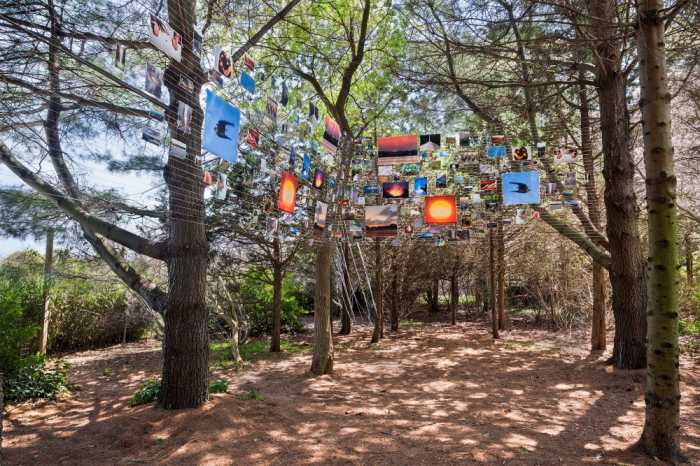
At West End 2 on Jones Beach are the summer breeding grounds of piping plovers and least terns. There are two ways to see least terns, uncomfortably and comfortably. Go near a roped off restricted area and they’ll find you, buzz, strafe and mercilessly harass you. It’s infinitely more comfortable viewing those that are walking, standing still or sitting on eggs, but they’re harder to find.
Looking For Nesting Terns
The weather is partly cloudy, breezy and cool with low humidity. At the parking field numerous terns are flying and hovering. One doesn’t wait until I walk onto the sand. Its black head and yellow bill are clear as it comes low over my car. They fly out from the roped off restricted area while one or two land and briefly walk out from under the orange string. However, they don’t seem to be nesting here. One tern makes a deep sound like an electric saw. Ominous. By now I know the drill and walk the perimeter away from them.
Least terns are aptly named as they are our smallest at 9-inches. History has not been kind to them. In the late 1800s, according to one source, they were shot for their feathers used by the millinery trade for ladies hats and were worth up to 12-cents per bird’s skin “to be mounted in one piece on a woman’s hat.” The slaughter, which decimated their numbers, came to an end with the Migratory Bird Treaty Act of 1918. While the leasts rebounded the following decade, they were threatened again by 1980. This time it was the loss of habitat, other species and now global warming. They are variously listed as endangered threatened or of high concern. Jones Beach is a blessing for these birds and I consider it something akin to a sacred area. Who can blame them for vociferously protecting their territory?

Killdeer
On the walkway near the restrooms are two killdeer. They move quickly then abruptly stop as if looking or listening for danger. Why are they on this harsh concrete? The killdeer, a member of the plover family, often nest away from water but if it did nest here, it would fit right in. The piping plover tries to lead people away from it’s nest by walking. The killdeer does the dramatic “broken wing” trick where it feigns having an injured wing to lead interlopers away. It may also shriek loudly. Its shrill, loud killdeer call is the source of its name. Eighteenth century naturalists called it the “chattering plover” or the “noisy plover.” Killdeer parents wait a few hours after their young hatch until their down is dry and their eyes are open. They then lead the newborns to an area where there are tiny insects and seeds on the ground so they can feed themselves. One source says that at least two days before they hatch “they are conversing in peeps and learning to understand the voices of their parents.” Astonishing.
I start to walk the sand path between two roped off areas. There’s a tern overhead carrying something in its bill, most like a small fish or crustacean that it got by skimming the water’s surface. Where’s its nest site? A week ago I saw no least terns except for those that dive-bombed me. Today, I want to see some nesting ones. Three dark terns are flying in a formation. While their heads are black, their bills are more orange than yellow, which might be a reflection of the light. It’s unlikely that there are two different species of terns here.
A few tree swallows come over the dunes then zip above tall grasses. Here they come, there they go. A small mammal comes out of the grass, crosses the path and disappears into a depression in the dunes. Two killdeer fly into the tall grasses. One stands still, its long bill visible. Do they have a nest here? It walks to where there’s a male red-winged blackbird, which jumps as the killdeer takes off.
Where the path meets the bathing area of the beach, there’s an area of smooth white sand in the restricted area in which is a wire enclosure. Inside the enclosure seems to be a raised clump of sand. Through binoculars, that raised sand reveals itself to be a piping plover with its bill in the sand probably sitting on eggs. There aren’t any other plovers nearby in the pristine looking restricted area. No reason to stay here.
A Crossroads
So far, today is a bust as far as seeing nesting least terns. I’m ticked off, but there’s no way I’m giving up. The only question is, which way to go? Looking in one direction there’s a dune area bordered by grass. I don’t know what’s down there. Looking in the other direction, the restricted area continues for a long way. I’ve been some of that way before. It looks like barren wild country. By the ocean there are five white, small, billowing objects. Could they be sailboats? What’s going on? Looking through binoculars, they turn out be the restricted area signs.
This empty pristine area is too alluring to resist. Before I realize it, my feet have made a decision and I’m walking. They’re going in the direction of the signs and I trust where they’ll take me. Maybe I’ll meet one of the plover stewards who comes out here to monitor the nest sites. There was one who I met here a year or two ago who was then in high school. I met him again out here last week. He’s at SUNY Jefferson now studying zoo technology. Maybe he’ll be there today. Whatever’s out there or if there’s nothing, I’m on my way to see it.































